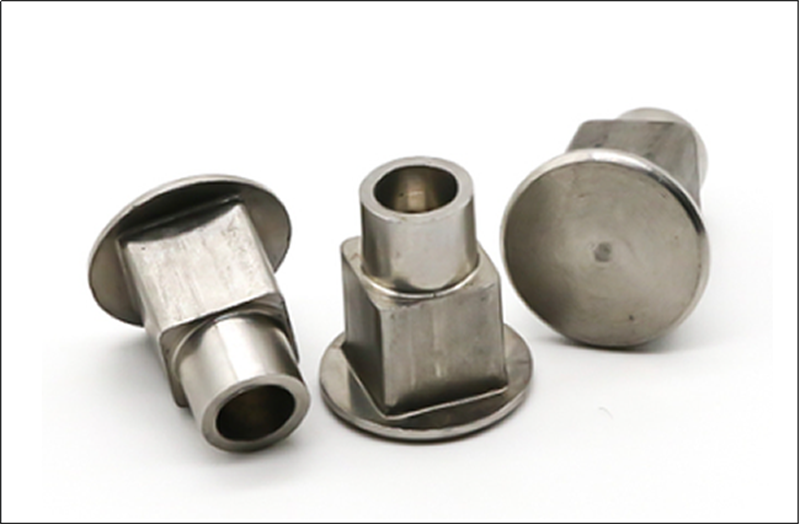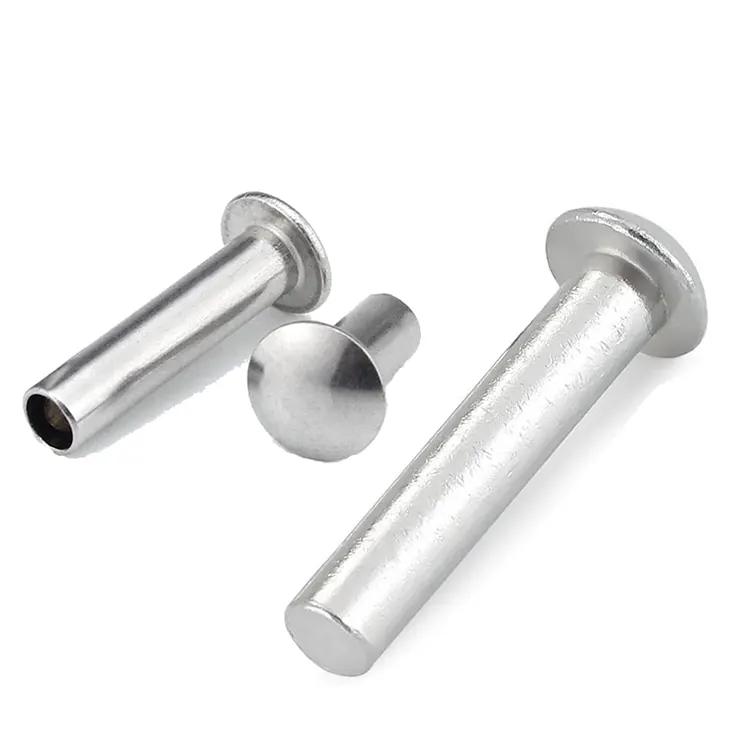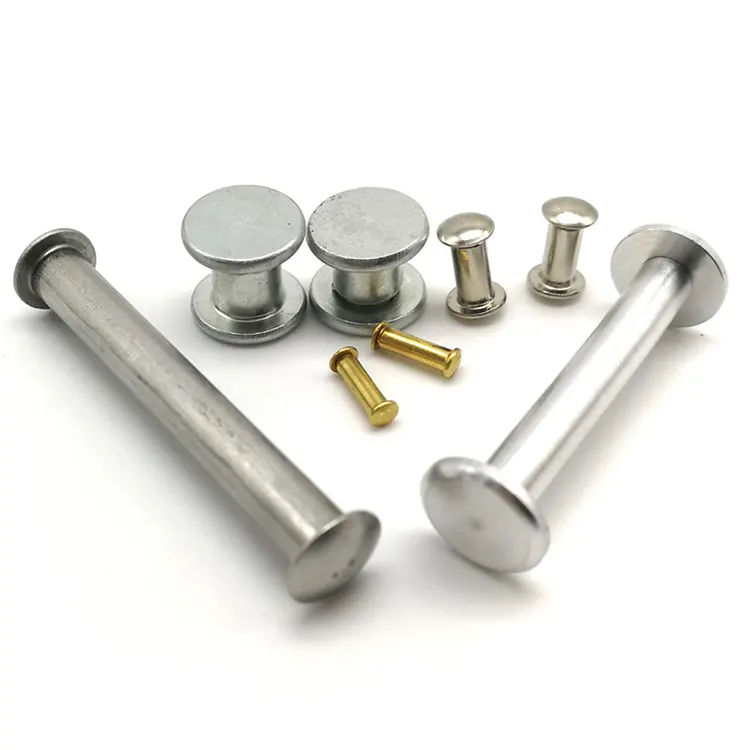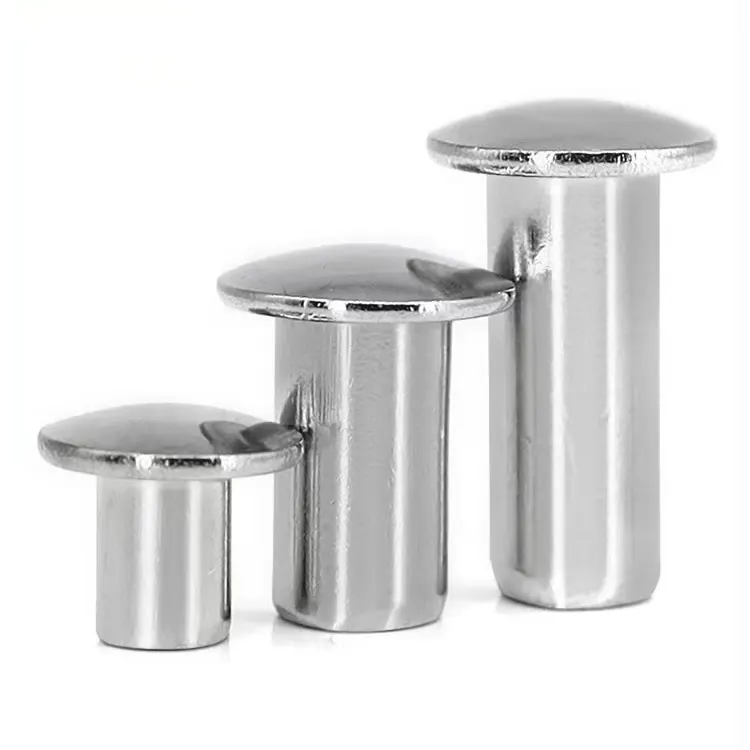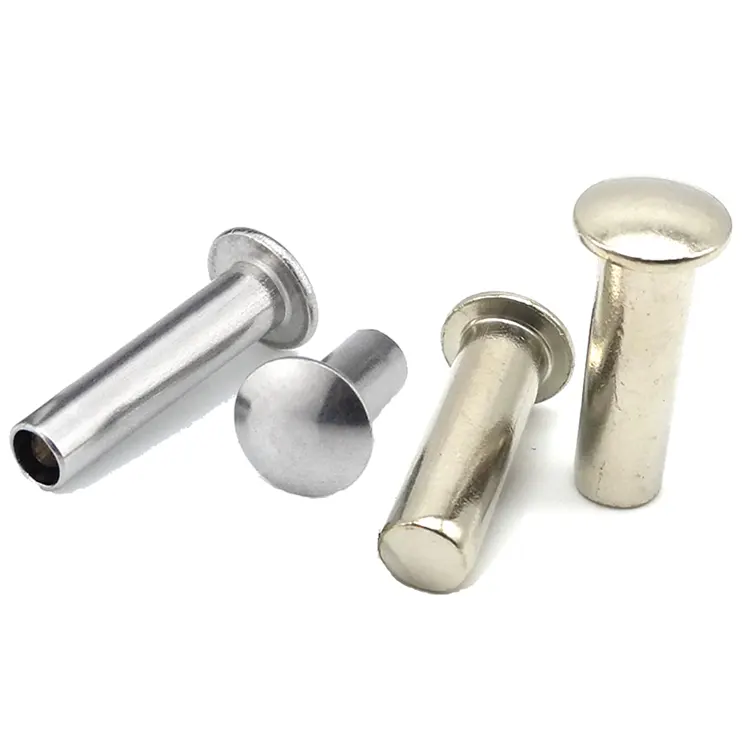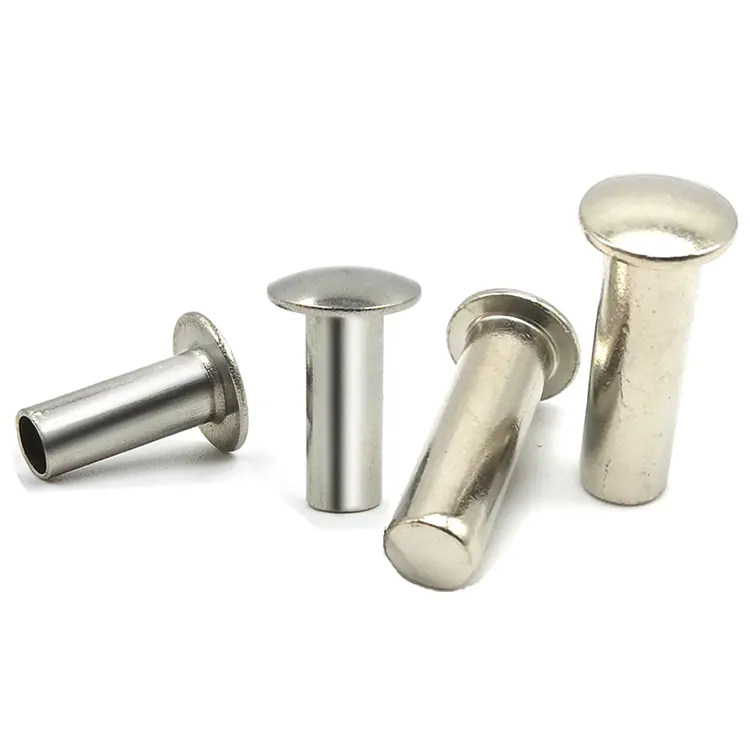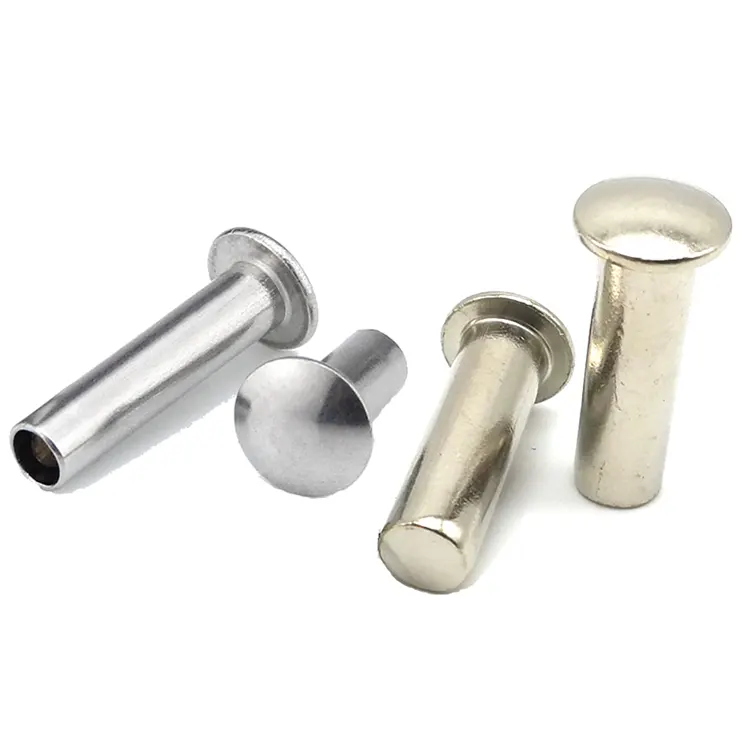Specialnitar
One of Chinese manufacturer of Special Rivets, offering excellent quality at a competitive price, is Notin. Feel free to get in touch.
In the field of mechanical manufacturing and assembly, rivets are a common fastener used to professionally connect two or more parts. According to the degree of standardization, rivets can be divided into two categories: standard rivets and non-standard rivets. The size, shape and material of standard rivets are uniformly specified, while non-standard rivets are customized according to specific needs. The following will introduce the characteristics and applications of non-standard rivets from multiple aspects.
What are non-standard rivets?
Non-standard rivets are also called special rivets. They refer to rivets that do not meet national standards or industry general standards. Their size, material, structure and other parameters are designed and manufactured according to the specific needs of customers. Due to the different connection requirements of different industries and equipment, standard rivets may not meet the requirements of certain special scenarios, so non-standard rivets came into being.
What are the characteristics of special rivets?
(1) Strong customization: Non-standard rivets can be personalized according to factors such as the use environment, stress conditions, and assembly methods to ensure that they perform well in actual applications.
(2) Diverse materials: In addition to common carbon steel and stainless steel, non-standard rivets can also be made of special materials such as aluminum alloy, copper alloy, titanium alloy, etc. to meet different corrosion resistance, strength and weight requirements.
(3) Flexible structure: The structure of non-standard rivets can be adjusted according to needs, such as head shape, stem diameter, length, etc., and can even be designed to be hollow, semi-hollow or other special shapes.
- View as
Universalhuvudnitar
En universalnit är en typ av mekanisk anslutningskomponent i nitklassificeringssystemet. Dess huvud har en platt bågformad struktur och är lämplig för sammanfogning av material som tunna metallplåtar, läder, canvas och trä. Denna typ av nit fixeras genom kalla eller varma nitningsprocesser och har fördelarna med enkel installation och kostnadseffektivitet i icke-tätade tryckbärande miljöer. Jämfört med liknande produkter som försänkta nitar är universella huvudnitar mer lämpade för nitning av tunna metallplåtar eller icke-metalliska material som läder, kanvas och trä på grund av deras utskjutande halvklotformade huvuddesign.
Läs merSkicka förfråganTvådelade nitar
Tvådelade nitar består vanligtvis av två delar: en honnit och en hannit. Honniten har ett inre hål i ena änden och en fast ände i den andra. Den manliga niten, som en solidstegnit, passar in i det inre hålet på honniten. För att använda, fäst först honniten på ett föremål, sätt sedan in hanniten i honniten och hamra den på plats, så att de två föremålen förenas. Denna design förenklar installationen samtidigt som den ger pålitlig anslutningsstyrka. Nuote Metals har 10 års erfarenhet av denna typ av tvådelade nitar, välkommen att skicka oss din ritning.
Läs merSkicka förfråganTruss Head Nitar
Nuote Metals tillverkar och säljer truss head nitar. Vi finns i Dongguan, Kina, och vi har över 40 maskiner för kall riktning som kan producera ett brett utbud av nitspecifikationer och typer. Vi erbjuder även skräddarsydda nitar. Truss head nitar är en vanlig nitad komponent, bestående av ett skaft, huvud och svans. De kännetecknas av ett stort, platt huvud och en ihålig eller solid svans, vilket ger utmärkta tätnings- och vattentätningsegenskaper.
Läs merSkicka förfråganStålnitar med rund huvud
Nuote Metals tillverkar och säljer stålnitar med runda huvuden i en mängd olika ytbehandlingar, inklusive zinkplätering, nickelplätering och Dacromet-plätering. Nitar med runda huvuden har en halvcirkelformad huvudform, som erbjuder utmärkt drag- och skjuvhållfasthet, som kan motstå tunga belastningar. Den runda huvuddesignen gör att niten bättre anpassar sig till anslutningskomponenten under anslutningen, vilket förbättrar fogstabiliteten och tätningen.
Läs merSkicka förfråganStålnitar
Kolstålnitar är ett vanligt mekaniskt fästelement som används i en mängd olika industriella och vardagliga produkter. Deras primära funktion är att säkert koppla ihop två eller flera komponenter, vilket skapar en stabil struktur. Kolstålnitar är populära på grund av sin styrka, hållbarhet och kostnadseffektivitet. Nuote Metals har tillverkat kolstålnitar i över ett decennium. Beläget i Dongguan, Kina, känd som "World's Factory", välkomnar vi besökare från hela världen att besöka oss.
Läs merSkicka förfråganNitar med pannhuvud i stål
Nitar med stålpannor är ett vanligt industriellt fästelement som används i ett brett spektrum av applikationer, inklusive fordon, flyg och konstruktion. Nuote Metals specialiserar sig på tillverkning av stålnitar med pannhuvud, som säljs över hela världen. Vi erbjuder ett brett utbud av nitar gjorda av olika material, inklusive mässing, rostfritt stål, aluminium och koppar. Vi kan också skräddarsy våra produkter med olika ytbehandlingar, såsom galvanisering, betning och anodisering, för att möta kundernas krav.
Läs merSkicka förfråganWhat are the characteristics of special rivets?
(1) Strong customization: Non-standard rivets can be personalized according to factors such as the use environment, stress conditions, and assembly methods to ensure that they perform well in actual applications.
(2) Diverse materials: In addition to common carbon steel and stainless steel, non-standard rivets can also be made of special materials such as aluminum alloy, copper alloy, titanium alloy, etc. to meet different corrosion resistance, strength and weight requirements.
(3) Flexible structure: The structure of non-standard rivets can be adjusted according to needs, such as head shape, stem diameter, length, etc., and can even be designed to be hollow, semi-hollow or other special shapes.
Manufacturing process of special rivets
The manufacturing of non-standard rivets involves multiple links, mainly including:
1.Material selection: Select suitable metal or alloy materials according to the use environment. 2. 2.Cold heading or hot heading: Use pressure processing to form the basic shape of the rivet into the metal blank.
3.Turning or milling: Fine-process the details such as the head and stem of the rivet to ensure dimensional accuracy.
4.Surface treatment: Such as galvanizing, nickel plating, anodizing, etc. to improve corrosion resistance or aesthetics.
Advantages and limitations of special rivets
(1) Advantages: They can meet special needs, improve assembly efficiency and connection reliability, and are suitable for complex or high-demand application scenarios.
(2) Limitations: Since they are customized products, the production cost is high, the delivery cycle is relatively long, and customers are required to provide detailed technical parameters.
How to choose suitable special rivets?
(1) Clarify the needs: Determine the key parameters such as the rivet's operating environment, stress conditions, and corrosion resistance requirements.
(2) Material matching: Select the appropriate material based on actual needs to avoid over-design that leads to increased costs.
(3) Communicate with suppliers: Provide detailed technical drawings or samples to ensure that the non-standard rivets produced meet expectations.
What are the main applications of special rivets?
(1) Aerospace: Aircraft, rockets and other equipment have extremely high requirements for the weight, strength and high-temperature resistance of fasteners. Non-standard rivets can be optimized according to specific needs.
(2) Automobile manufacturing: Certain special models or high-performance vehicles may require non-standard rivets to meet the needs of lightweight or high-strength connections.
(3) Electronic equipment: Precision instruments or small electronic equipment may require micro non-standard rivets to ensure the stability and compactness of the connection.
(4) Construction industry: Some special-structured buildings or decoration projects may use non-standard rivets to meet specific installation requirements.
Market status of special rivets
With the advancement of industrial technology, more and more industries have begun to use non-standard rivets to optimize product design. At present, non-standard rivet manufacturers are mainly concentrated in the Yangtze River Delta and Pearl River Delta regions in China, and can provide a variety of customized services. Due to the high unit price of non-standard rivets, its market size is relatively small, but the demand in the high-end manufacturing field continues to grow.
Future development trends
(1) Lightweight design: With the improvement of energy-saving and environmental protection requirements, non-standard rivets made of lightweight materials will be more popular.
(2) Intelligent production: Automated equipment and digital management will further improve the production efficiency and quality stability of non-standard rivets.
(3) Wider application: Emerging industries such as new energy and robotics may drive the growth of demand for non-standard rivets.
In summary, special rivets are highly customized fasteners that can meet special needs that standard rivets cannot meet. Although its production cost is relatively high, it plays an irreplaceable role in industries such as aerospace, automobiles, and electronics. In the future, with the advancement of manufacturing technology, the application scope of non-standard rivets is expected to further expand.






